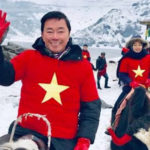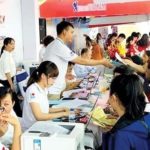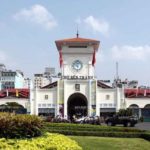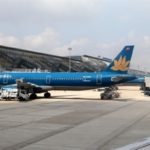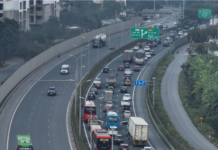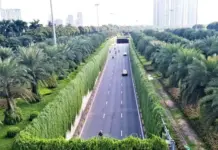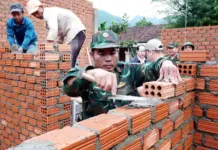|
Vietnam News Today (Apr. 4): Notable Headlines Stay up to date with the latest news from Vietnam with these notable headlines from today. 1. Vietnam Airlines Offers Free Flight Changes During the Pandemic Vietnam Airlines announced that it will be offering free flight changes for passengers affected by the ongoing pandemic. The airlines will waive any fees associated with the change in flight date, as well as provide discounts for tickets purchased for future flights. 2. Vietnam Launches Special COVID-19 Vaccine Program for Frontline Workers The Vietnamese government has launched a special vaccination program for frontline workers, such as medical staff and police officers. The program will provide free vaccines to those workers, in order to protect them from the virus. 3. Vietnam Announces Plans To Reopen Businesses, Schools The Vietnamese government has announced plans to gradually reopen businesses and schools, with certain safety measures in place. These plans include the use of mandatory masks and social distancing in public spaces. Vietnam has been elected as the Vice President of the Asia-Pacific UNESCO Clubs and Associations (APUCA) at the 4th Asia-Pacific UNESCO Clubs and Associations Conference held in Bali, Indonesia. This is a great honour for Vietnam, and testament to its commitment to supporting and promoting UNESCO’s mission of peace and education worldwide. A state visit to Vietnam by Australia’s Governor-General is set to deepen the goodwill and trust between the two nations, according to an expert. The Governor-General of Australia, Sir Peter Cosgrove, is set to embark on a state visit to Vietnam from November 29 to December 1, in a move designed to strengthen the bond of friendship and trust between the two countries. Professor John Blaxland, an expert in international relations from the Australian National University, has praised the move and believes it will help take the relationship between the two nations to the next level. “The visit is an important opportunity to strengthen the ties between Australia and Vietnam,” said Professor Blaxland. “It’s a chance to deepen the goodwill and trust between our two nations.” The visit is expected to include a number of high-level engagements with Vietnamese leaders, including the President of Vietnam, Nguyen Phu Trong. Discussions are also likely to focus on trade, defence and security, as well as people-to-people links. “The visit is a great opportunity for the two countries to build on the strong relationship they already share,” Professor Blaxland added. “It will be a great opportunity to further strengthen our partnership.” Activities are currently underway to promote the culture of various Vietnamese ethnic groups. These initiatives are aimed at preserving traditional practices and customs, while also helping to foster appreciation and understanding of the country’s diverse cultural heritage. From festivals to exhibitions and classes, the programs are designed to educate people about the vibrant history and culture of the ethnic groups. Additionally, they are also providing unique opportunities for the communities to come together and share their customs and experiences. Vietnamese and Chinese localities are looking to increase their investment cooperation, aiming to bolster their respective economies. Both countries have been exploring ways to expand their bilateral trade and investment activities in an effort to achieve mutual development and economic growth. To this end, they have signed multiple bilateral agreements and are actively engaging in exchange activities. They are also working together to identify and develop new business opportunities, such as through the construction of industrial parks and special economic zones. Moreover, the two countries are exploring ways to enhance their collaboration in the fields of finance, technology, and innovation. Both governments are committed to facilitating greater investment cooperation between their businesses in order to maximize the potential of their respective economies. and Africa. Vietnam’s rice is highly sought after and commands good prices in Asia, Europe, and Africa. This is due to its superior quality and unique flavor, which makes it a popular choice for many consumers. Fidel Castro, in an extraordinary meeting with the Vietnamese leadership, said that the bilateral relationship between the two countries is an example of “fraternity and solidarity”. Cuba pays special attention to its ties with Vietnam. Cuban leader Fidel Castro, in an extraordinary meeting with the Vietnamese leadership, declared that the bilateral relationship between the two countries is an exemplar of “fraternity and solidarity”. The forest area that was planted in the first quarter of the year increased by 4.7%, according to the latest figures released by the Ministry of Forestry. This is the highest quarterly increase since 2015, when the total planted area increased by 6.1%. The figures show that a total of 1.8 million hectares of forest were planted in the first three months of the year, compared to 1.7 million hectares in the same period last year. This is a significant increase, as the average annual rate of growth for new forest area has been around 2.3% in recent years. The figures also revealed that the majority of the new forest areas were planted in the eastern region of the country, which accounted for 61% of the total. This was followed by the central region, which accounted for 22%, and the western region, which accounted for the remaining 17%. The Ministry of Forestry attributed the increase in newly planted forest area to the government’s efforts to promote reforestation and conservation initiatives. It also noted that the increase was due to a number of public-private partnerships that have been established to support the planting of trees in the country. Overall, the figures show that the amount of forest area planted in the first quarter of the year is a positive sign for the environment, and a step in the right direction toward achieving the government’s goal of increasing the country’s total forest cover. Hanoi’s teachers for their dedication to their profession. The Vietnam Friendship Village was honored to recognize Hanoi’s dedicated teachers for their tireless commitment to their profession. Their passion and hard work has had a lasting impact on students across the city. The colors of Vietnam’s ethnic groups’ cultures form an integral part of the culture of Hanoi’s village. From the bright and vibrant colors of the traditional Hmong clothing to the subtle shades of the Tay ethnic group, the colors of various ethnic cultures are showcased in Hanoi’s village. From the intricate patterns of the Dao people’s clothing to the bold and beautiful colors of the Kinh people, the village is a vibrant display of the different colors of Vietnam’s ethnic groups’ cultures. The village provides a unique opportunity for visitors to experience the culture and customs of various ethnic groups in Vietnam, as well as learn more about the history and traditions of each ethnic group. With its vibrant display of colors, Hanoi’s village is a great place to explore and appreciate the unique culture of Vietnam’s ethnic groups. |
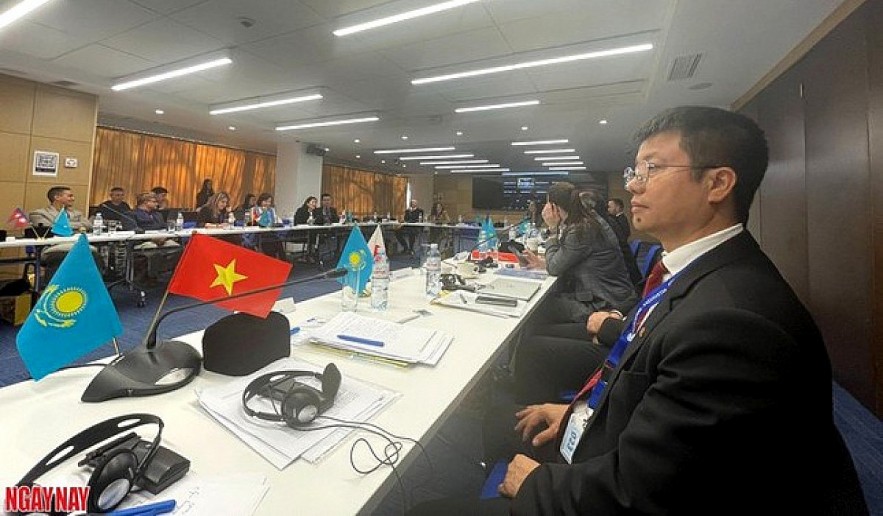 |
| Tran Van Manh, vice president and general secretary of the Vietnam Federation of UNESCO Associations, and Editor-in-Chief of Ngay Nay Magazine, represents Vietnam, at the AFUCA Executive Board meeting in Almaty, Kazakhstan on April 2. (Photo: ngaynay.vn) |
Vietnam elected vice president of Asia-Pacific UNESCO Clubs and Associations
Vietnam has been elected Vice President of the Asia-Pacific Federation of UNESCO Clubs and Associations (AFUCA) at the federation’s 26th executive board meeting, which was held in Almaty, Kazakhstan, on April 2nd.
Tran Van Manh, Vice President and General Secretary of the Vietnam Federation of UNESCO Associations, as well as Editor-in-Chief of Ngay Nay Magazine, attended the meeting on behalf of Vietnam.
Manh joined representatives from 13 AFUCA member countries to examine the federation’s operations for 2021-2022, and to prepare for the 10th congress of the World Federation of UNESCO Clubs and Associations. During the meeting, the representatives approved amendments and supplements to the AFUCA Charter and elected key posts of AFUCA for the new term.
Delegates at the Vietnam National Assembly have praised a report that highlighted a range of meaningful and practical programmes and activities in the areas of culture, science, education, and information and communication, according to the Voice of Vietnam (VOV).
It also aims to create a platform to share knowledge, experiences, resources and best practices to help UNESCO Clubs and Associations to achieve their goals. The Asia-Pacific Federation of UNESCO Clubs and Associations (APFUCA) was established in 1974 with the aim of promoting collaboration among UNESCO Clubs and Associations in the Asia-Pacific region. The organization works to encourage the growth and establishment of UNESCO Clubs and Associations in the region, and to provide a platform to share knowledge, experiences, resources, and best practices. By doing so, APFUCA seeks to help UNESCO Clubs and Associations achieve their goals and objectives. Through its network of UNESCO Clubs and Associations, APFUCA works to foster greater understanding among the people of the Asia-Pacific region, and to promote the values and ideals of UNESCO. By connecting members of the Asia-Pacific region, APFUCA seeks to create a more interconnected and collaborative atmosphere. In this way, it works to create a better future for the region and its people.
Since joining AFUCA in 1996, the Vietnam Federation of UNESCO Associations has consistently been praised as one of the most dynamic associations in the region, with numerous substantive and effective contributions to the UNESCO movement. Furthermore, between 1999 and 2004, Vietnam held the position of vice president of AFUCA.
State visit to Vietnam by Australian Governor-General to deepen the two’s goodwill, trust: expert
Dr. Leung noted that the two countries have similar views on many regional and global issues, for instance, both support a rules-based international order and are active members of the Asia-Pacific Economic Cooperation (APEC) forum. She also pointed out that the comprehensive partnership between the two countries is built on the basis of mutual trust and understanding, and the visit of the Governor-General is expected to deepen the goodwill and trust for the mutual benefit of both countries.
Dr. Leung highlighted the importance of the educational ties between the two countries, saying that the number of Vietnamese students in Australia has been increasing over the years. She said that the students have brought their knowledge and skills to the country, contributing to the development of the Vietnam-Australia relationship.
Furthermore, Dr. Leung said that Australia and Vietnam can further strengthen their relations by expanding collaboration in various areas, such as trade, investment, infrastructure, energy, and health. She also suggested that the two countries should set up a joint committee to promote cooperation and exchange between their governments.
In conclusion, Dr. Leung expressed her hope that the visit of the Governor-General to Vietnam will further enhance the friendship and trust between the two countries, and lead to increased cooperation in many areas.
According to her, when Doi Moi (Renewal) began in Vietnam in the late 1980s, many talented Vietnamese scholars were selected to come to the ANU to pursue courses in “market economics”. This was made possible with the support of AusAID – now part of the Australian Department of Foreign Affairs and Trade (DFAT) – which provided the necessary funding.
Upon completion of their studies, they returned home to their respective positions in the Vietnamese Government, academic institutions, and universities. There, they had a largely responsible role in implementing the various phases of economic reforms, which ultimately resulted in Vietnam becoming a middle-income country within just two decades. This transformation has enabled the country to gain access to regional and international organisations, such as ASEAN and the World Trade Organization, as reported by VNA.
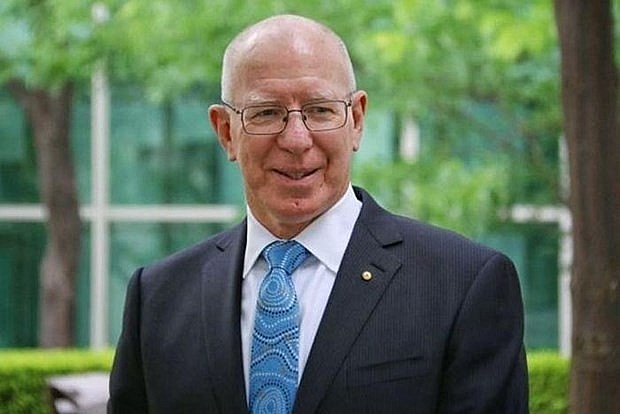 |
| Australian Governor-General David Hurley (Photo: abc.net.au) |
Australian Government-funded scholarships in the region, and in Vietnam in particular, have been widely recognised as one of the most effective forms of development aid. She added that these scholarships have had a significant impact on the country’s progress.
The expert also said that rapid economic growth and development in Vietnam has benefited both countries immensely, as Australian exports to Vietnam have been increasing steadily at an average of around 12% annually since 2013. Moreover, the export of education services has seen a particularly remarkable growth, with more than 26,000 Vietnamese students studying in Australia in 2019 alone.
There is ample scope for improvement in the export of other services, such as tourism and IT, in addition to increased investments from the Australian business sector in Vietnam.
Meanwhile, schemes such as the New Colombo Plan have enabled more than 4,500 undergraduate students from Australian universities to spend time in Vietnam, learning about its people, culture, language, and ways of doing business. This should, in time, improve business contacts and investment flows between the two countries.
The recent establishment of the Vietnam-Australia Centre at the Ho Chi Minh National Academy of Politics in Hanoi has been met with great enthusiasm and appreciation, highlighting the strong bond of trust and goodwill that exists between the two nations, she added.
Activities underway to promote culture of Vietnamese ethnic groups
A series of activities are being held at the Vietnam National Village for Ethnic Culture and Tourism in Hanoi’s suburban Son Tay Township from April 1 to May 3 to celebrate Vietnamese Ethnic Groups’ Culture Day on April 19. Visitors to the site can enjoy an array of cultural performances, handicraft exhibitions, and traditional cuisine from the various ethnic groups of Vietnam. Additionally, there will be talks and workshops on the history, customs, and languages of these ethnic groups. The event aims to promote the cultural heritage of the nation and to foster better understanding and appreciation of the nation’s diversity. It is expected to be an enriching experience for all who attend.
The main attraction of this series will be the re-enactment of a traditional market session from the northern province of Lao Cai. Visitors will have the chance to witness local farm produce, food, and tourism products being showcased. It will be a great opportunity to experience the culture and heritage of the region. Furthermore, this event will serve as a platform to promote and strengthen the economic development of Lao Cai.
Visitors to the festival will be treated to a variety of activities, including a musical programme, folk games, and performances of the art of Khen (panpipe) by the Mong ethnic group. According to VOV, these performances are sure to be unforgettable experiences for all who attend. Additionally, there will be a range of traditional cuisine and souvenirs available. This festival promises to be an exciting and unique cultural experience for all who visit.
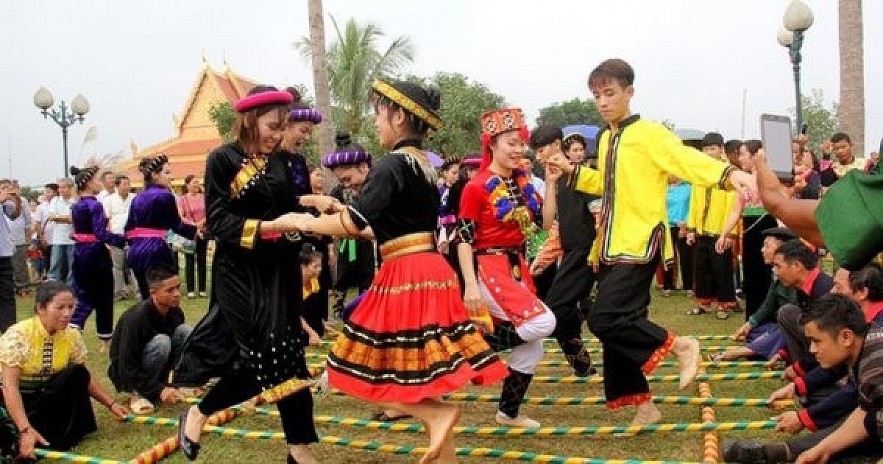 |
| Photo: VOV |
Throughout April, ethnic festivals will be re-enacted in the national village, with exciting events such as the wedding ceremony of the M’nong ethnic people in Dak Nong province and the Gong festival of the Central Highlands region.
Furthermore, guests will have the opportunity to partake in cultural exchanges with the Xo Dang ethnic community from Kon Tum province, giving them the opportunity to explore and learn more about the customs and traditions of this unique culture.
The activities to celebrate Vietnamese Ethnic Groups’ Culture Day aim to honour the cultural values of the country’s diverse ethnic groups and the cultural diversity of the nation, held annually on April 19th. This special day is a time to appreciate the unique contributions that the various ethnic groups have made to the country’s culture, and to recognize the importance of cultural diversity. Through activities such as traditional music and dance performances, traditional cuisine, and other cultural activities, people can come together to celebrate and learn more about the culture of their fellow Vietnamese citizens. By recognizing and celebrating the different ethnic groups in Vietnam, we can all come together and celebrate the beauty of the country’s rich cultural heritage.
Vietnamese, Chinese localities look to boost investment cooperation
Vice Chairman Nguyen Trung Thao of Cao Bang province in Northern Vietnam has recommended that companies from Cao Bang and Baise city in Guangxi Autonomous Region of China prioritize their investments in potential sectors such as logistics, processing-manufacturing, and high technology.
During a working session between the localities on April 2, he called for promoting ties in agriculture, education, health, tourism, trade and services as well as supporting the economic development in the border areas, cited VNA.
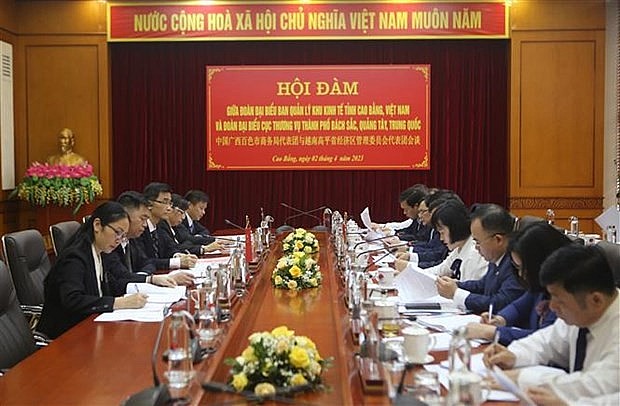 |
| An overview of the working session between the two localities. (Photo: VNA) |
For his part, Li Yucheng, Vice Mayor of the Baise Administration, asserted that the city has the potential to drive border economic development and enjoy a close relationship with Cao Bang Province. This, in turn, creates a favorable condition for both sides to further foster their trade relations.
Cao Bang is an integral gateway for investment from Chinese cities to Vietnam, as well as the Association of Southeast Asian Nations (ASEAN), according to a statement. This investment has been instrumental in forging closer ties between the two countries and the region as a whole.
The official stated that he anticipates Cao Bang province will foster market expansion, further noting that the city pledges to provide incentives for businesses in the region.
On the occasion, representatives of the Cao Bang Economic Zone Management Board and the Baise Department of Commerce held talks, during which they discussed practical measures to promote trade and enhance the business environment at the border gates. During the meeting, both parties explored ways to improve the investment climate and boost economic performance in the area. The representatives also identified potential opportunities for collaboration and further development of the region. Ultimately, both sides agreed to work together to create a more conducive environment for businesses operating in the Cao Bang Economic Zone and the Baise Department of Commerce.
Cao Bang, a province in Vietnam, currently has six international border crossings with China. These crossings constitute the major land links between the two countries and facilitate trade, travel, and other forms of exchange.
Vietnam’s rice sells at good prices in Asia, Europe
Asian clients, particularly those from China and Indonesia, have made an unexpected surge in their purchases of rice from Vietnam. This is a remarkable development for the rice industry in Vietnam, as it signals a strong demand from Asian markets. With the new influx of customers, Vietnam is now well-positioned to capitalize on the opportunity and further solidify its position as a major rice supplier.
The Ministry of Agriculture and Rural Development (MARD) reported that, despite a decrease in growth rates during the first two months of the year, rice exports in March experienced an unexpected surge. The export turnover for March was impressive, reaching a total of $480 million, representing an increase of 82.6 percent compared to the previous month.
The rise in price is attributed to a strong demand from Philippine buyers.
At present, Vietnam’s 5 percent broken rice is selling at $450 per ton, representing an increase of $5 per ton over the $440-445 per ton earlier this month. This rise in price is largely due to the strong demand from Philippine buyers.
Businesses reported that rice prices had risen due to improved shipments to China and increased purchasing of rice by Indonesia for its national reserves.
As of the end of March, Vietnam had exported 1.79 million tons of rice, earning $952 million, an increase of 19.3% in quantity and 30.2% in value compared to the same period in 2022.
The average export price of $531 per ton in the first three months of the year was 9.2 percent higher than the same period in the previous year, according to the Vietnam News Agency (VNN).
The Philippines was the biggest consumer of Vietnam’s rice in the first two months of the year, accounting for 43.3% of the market share.
Nearly 402,000 tons of rice were exported to the market during that time, which brought turnover of $204.7 million, a 25 percent decrease in quantity and 17.8 percent in value compared with the same period last year.
Analysts have commented that Vietnam’s rice is unexpectedly selling for good prices in Asian markets. Rice exports to China during the first two months of 2023 yielded a turnover of $90 million, representing a 120.5% increase, while exports to Singapore experienced a 40.6% increase.
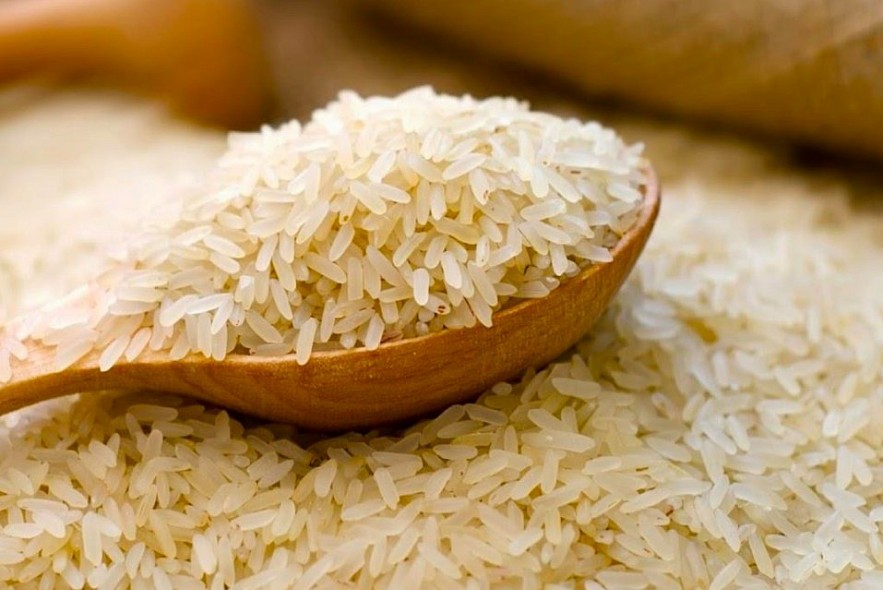 |
| Photo: VNN |
However, the sharpest increase was seen in the Indonesian market, which consumed $67.3 million worth of Vietnam’s rice in the first two months of 2023. This represented a record-high growth rate of 30,352 percent compared with the same period in 2022. As a result, Indonesia now accounts for 14.3 percent of Vietnam’s total rice exports.
The Vietnam Trade Office in Indonesia recently announced that the Indonesian Ministry of Trade has stated their intention to import 2 million tons of rice for national reserves in 2023. This will help ensure the country has adequate reserves of the essential commodity.
The imports of rice from Vietnam will be used for the stabilization of rice prices, support to 21.53 million poor households, and other purposes. Preum Bulog is set to import 500,000 tons of rice as soon as possible, offering a great opportunity for Vietnam to expand its rice exports to Indonesia.
In mid-February, Quang Tri province exported 15 tons of organic rice to Europe for a price of $1,800 per ton. Quang Tri Organic Agro Products, the exporter, has plans to export between 30-50 tons of organic rice to Europe every month.

